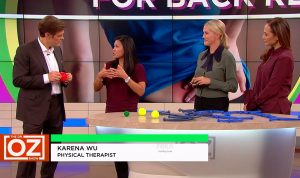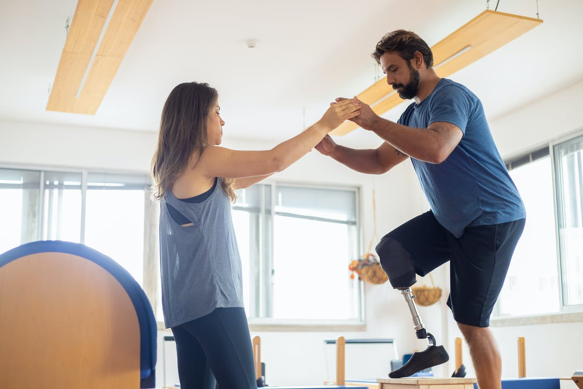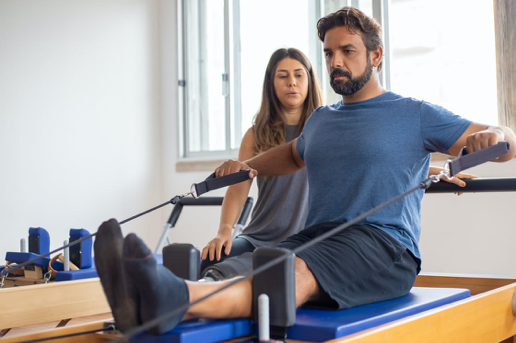 ActiveCare Physical Therapy, PC
ActiveCare Physical Therapy, PC
29 West 38th Street
Suite 601
New York, NY 10018

Importance of Pilates for Rehabilitation
How effective is pilates for rehabilitation? Getting injured can throw a wrench in your plans, and cause a lot of inconvenience. Moreover, it can cause sideline you from your normal routine and cause you to feel dejected. On the other hand, it might signal the beginning of a voyage of rediscovery, fresh ideas, and untapped strength.
According to studies, Pilates is beneficial for rehabilitation, since it helps lessen pain and incapacity. The leading Pilates training institutes now provide specialized programs for PTs (physiotherapists) and other medical professionals because Pilates for rehabilitation is becoming more and more common in physiotherapy clinics and hospitals worldwide.
Pilates for rehabilitation is a growing phenomenon, and if you are thinking about its impact and benefits, here are some critical factors for you to understand the importance of Pilates for rehabilitation.
Why Go for Pilates?
Many weekend warriors, who spend the week sitting down before getting intensely into an extreme sport without training, suffer injuries. Injuries to the back, wrist, hip, shoulders, and knees are most common. Pilates is an excellent approach to getting the body ready for regular activities, sports, or other demanding forms of training. It aids both injury prevention and injury recovery.
Due to its rehabilitative character, doctors and physical therapists advocate Pilates as the preferred therapy for rehabilitation. It’s a full body workout that encourages strength, agility, and good posture. The practice of pilates satisfies the requirement for both flexibility and stability in a healthy body. Pilate movements can be altered to suit the needs of injured clients. Several kinds of pilate exercises and variations work on the injured area to build strength and support.
How Can Pilates Impact Injuries?
No form of exercise, including Pilates, can ensure that you won’t get hurt. Being physically active and in tune with your body can positively impact how badly you are hurt and how quickly you may recover.
You can gain internal strength and stability with a regular Pilates routine. It enhances bone density, balance, and range of motion, aligning and balancing the body’s muscles. Pilates promotes proprioception, the ability to perceive and know one’s position in space. All of this adds to improved body reflexes and balance, which helps shield against slips, trips, and injuries brought on by overuse or repeated motions.
Why is Pilates a Better Option Than Conventional Exercise for Rehabilitation?
Pilates for rehabilitation concentrates on the person’s demands, proprioception and posture. Most conventional exercise emphasizes weight reduction or gains with increased sessions or heavy weights. The emphasis in Pilates is placed on maintaining proper mobility across the entire body to gain strength through stability.
Employing pilates for rehabilitation helps to bring balance and functionality to the body by strengthening the weak areas. Pilates is both a short and long term answer, since it will safely enhance your present condition while steadily preparing you for more complex moves.
The practice of pilates was established on its principles which stress the quality of movement by focusing on breathing, attention, flow, and precision. There is an old school belief that after becoming hurt, one should merely rest; yet inactivity is bad for general health. The body must continue to move, and Pilates for recovery enables this safely and gently. The injured person may find conventional types of physical activity and even rehabilitation too demanding, if not appropriately prescribed.
Pilates for Rehabilitation: Conclusion
We can conclude that pilates for rehabilitation is an effective and safe way to treat injuries and get fit. If you are recently injured and are looking for a pilates rehabilitation session, call us at ActiveCare Physical Therapy® at (212) 777-4374. We would love to hear from you!
ActiveCare Physical Therapy ©
29 West 38th Street
Suite 601
New York, NY 10018
(212) 777-4374
staff@bestptnyc.com


